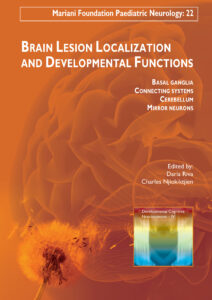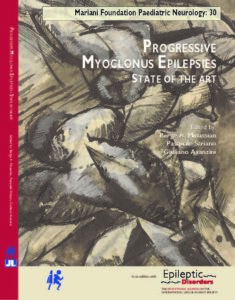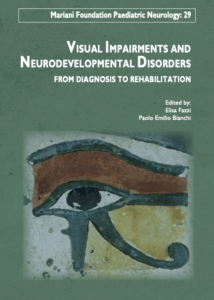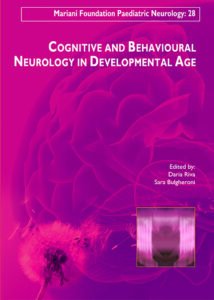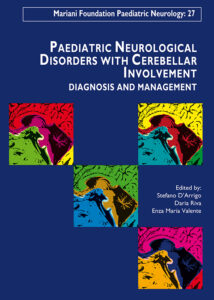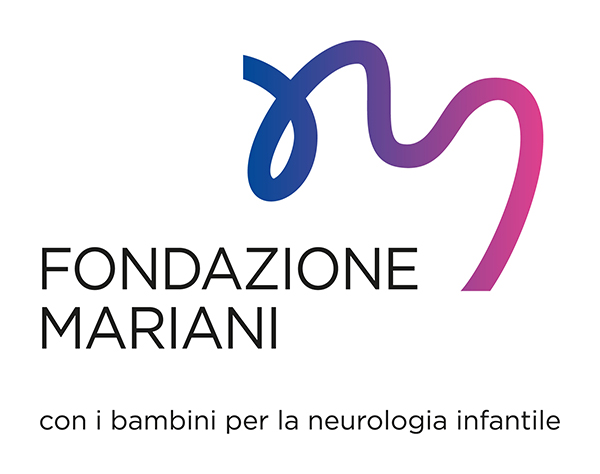Publications / John Libbey Eurotext
Brain lesion localization and developmental functions
Basal Ganglia, Connecting Systems, Cerebellum, Mirror Neurons
Pubblicazione conseguente al IV Corso di formazione in Neuroscienze cognitive dello sviluppo (Orvieto, novembre 2008)
Editors: D. Riva, C. Njiokiktjien
London-Paris, John Libbey Eurotext Ltd, 2010, pp. 242
Advances in the neurocognitive sciences, aided by increased imaging power, have extensively confirmed that during early development specific areas of a child’s brain are designed to process specific functions—neurologic, cognitive, linguistic, motoric, and visuospatial, among others—and that this processing involves globally complex interconnections with other areas distributed throughout the brain: a lesion in a given area interferes with the functioning and coherence of the system as a whole. This volume discusses the consequences of early brain injury to many parts of the brain, including the basal ganglia, with their related disorders of aphasia, OCD, and AD/HD, as well as white matter and its associated neuropsychological impairment of intelligence, language, and visuoperception. The corpus callosum and cerebellum are studied as they relate to learning motor sequences and language as well as communication disorders and social behavior. This book also looks at mirror neurons as they affect the understanding of others’ intentions and the development of empathy and gestural and other forms of language. The implications of these findings are examined since they have a critical effect on the rehabilitative and educational efforts that are being designed to mitigate the effects of early brain lesions on the growing child.
Contents
1) Cognitive development after early brain lesions: implications for reorganization of function and distributed networks – Harvey S. Levin and Elisabeth A. Wilde
Basal ganglia
2) Basal ganglia and thalamus: connections and functions – Alessandra Erbetta
3) Aphasia in children with basal ganglia lesions – Philippe F. Paquier
4) Neuropsychiatric disorders of the basal ganglia: the neurobiology of Tourette syndrome, obsessive-compulsive disorder, and attention deficit hyperactivity disorder – Sara Carucci, Silvia Paba, Carmen Puddu, Gianluigi Melis and Alessandro Zuddas
5) Phenomenology of obsessive-compulsive disorder and clinical implications of its comorbidity with Tourette syndrome and attention deficit hyperactivity disorder – Gabriele Masi
Connecting systems
6) Long-term cognitive and neuropsychological outcome of brain alterations in preterm infants – Daria Riva, Sara Bulgheroni, Arianna Usilla, Chiara Treccani, Veronica Saletti, Silvia Esposito and Chiara Vago
7) Prematurity: visuo-perceptual disorders – Elisa Fazzi, Stefania M. Bova, Alessia Giovenzana and Sabrina G. Signorini
8) Multiple sclerosis in children and adolescents: neurocognitive disorders – William S. MacAllister 9) Corpus callosum malformation in developmental disorders – Lynn K. Paul
Cerebellum
10) The cerebellum as a multipurpose neural machine: basic principles and future perspectives – Brunello Ghelarducci
11) The role of the cerebellum in processing higher cognitive and social functions in congenital and acquired disease in developmental age – Daria Riva, Chiara Vago, Arianna Usilla, Chiara Treccani, Chiara Pantaleoni, Stefano D’Arrigo, Sara Bulgheroni
12) The role of cerebellar structures in communication and language disorders – Alessandro Tavano and Renato Borgatti
13) Developmental dyspraxias: assessment and differential diagnosis – Charles Njiokiktjien
Mirror neurons
14) Broca’s area in language, action, and music – Luciano Fadiga, Laila Craighero and Alessandro D’Ausilio
15) Gesture for speaking and gesture for thinking in children with typical and atypical development: a new theoretical framework – Olga Capirci, Maria Cristina Caselli and Valerio De Angelis
16) Using gestural communication for language rehabilitation – Bruna Molteni, Gloria Airaghi and Daniela Sarti
17) Mirror neurons and congenital cerebral lesions – Andrea Guzzetta
